Reading Time: 4minutes

Table of Contents
The health risks of consuming too much sodium
Sodium is an essential mineral, necessary for both the contraction of muscles and the transmission of nerve impulses. But consuming too much sodium can result in greater fluid retention, triggering health problems. Table salt, which is a compound of sodium and chlorine, is a major source of sodium in the diet. The good news is that some countries are challenging this threat.
Vietnam aims to reduce salt in people’s diets
In Vietnam, for example, the government enacted an ambitious national nutrition strategy in 2021 that includes reducing salt intake, which at 9.4g per person per day is currently nearly double the daily intake recommended by the World Health Organization, according to a 2015 national survey by the Ministry of Health. The government aims to reduce people’s daily intake to 8g by 2025 and to 7g by 2030.
Vietnamese people get 81% of the salt they consume from condiments added to food either in the kitchen or at the table. The two main high-sodium condiments used are bot canh (a powdered, mixed-seasoning soup broth) and nuoc mam (fish sauce). These account for 35% and 32% of total salt intake, respectively, as compared to MSG and table salt, which account for roughly 8% and 6%.
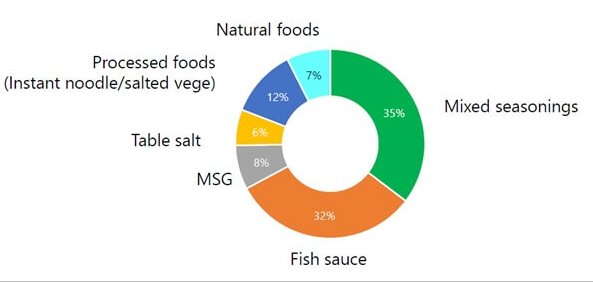
Sources of salt in the Vietnamese diet
Another similar high-sodium culinary ingredient is mam (fermented seafood preserved in salt), which is a main ingredient in a wide variety of dishes ranging from hotpot to steamed vegetables. Even the delicious tropical fruits for which the country is known are often eaten with a generous sprinkling of salt and chili pepper or lime, as are grilled prawns, a popular street food. Because one dish can contain a variety of high-sodium seasonings, it can be hard for people to be aware of their sodium intake and how they might reduce it.
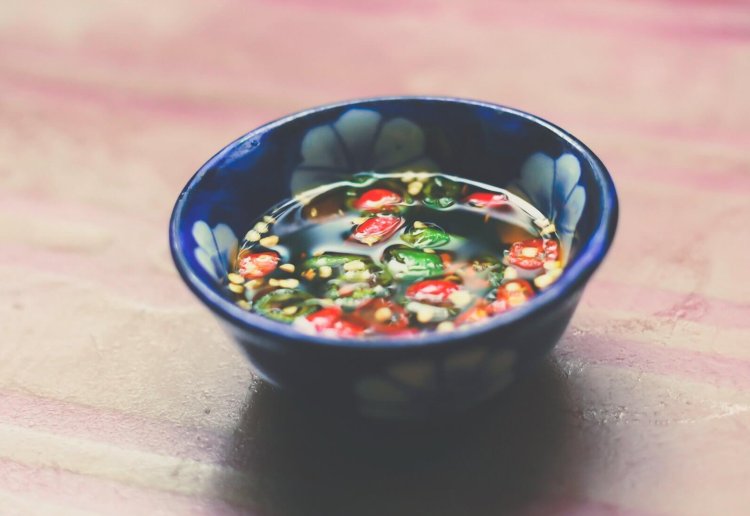
Nuoc Mam - Vietnamese Fish Sauce
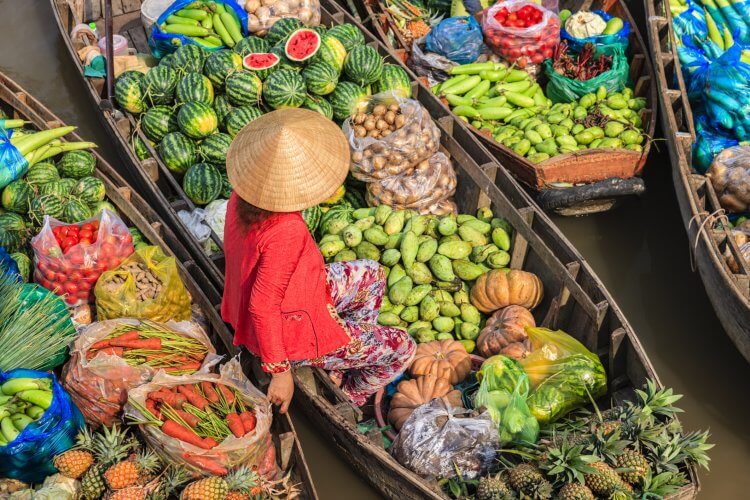
Vietnamese people often eat fruits with salt
Regional differences lend Vietnam a rich culinary diversity, meaning a one-size-fits-all approach to salt reduction most likely would not work. Northern Vietnamese food tends to be relatively lightly seasoned, with fish sauce favored over chili peppers, as the colder climate is less conducive to growing spices. In the mountainous spice-producing central area, food is saltier and spicier. In the warm, fertile south, where seafood, fruits, and fresh herbs are abundant, sweeter foods, often cooked in coconut milk, are preferred.
Ajinomoto Vietnam strives to raise awareness around sodium intake while respecting culture
Ajinomoto Vietnam (AVN) is supporting the Vietnamese government in its sodium reduction targets through a range of initiatives aimed at raising awareness around salt intake. The company is promoting umami seasoning AJI-NO-MOTO® as a healthy yet delicious alternative, especially with Generation Z and other younger Vietnamese, while at the same time helping people celebrate the traditional foods crucial to their culture and national or regional identity.
In addition to the School Meal Project, aimed at school-aged children, and Mother and Children Project for pregnant or breastfeeding mothers and caregivers of children under 5 years old, AVN is cooperating with universities and colleges to organize online and offline tours of its plants and facilities to educate people about nutrition and delicious salt reduction using umami. In addition, it is holding cooking contests for students and cooperating with influencers and experts in the health field to make short videos about delicious salt reduction using umami to post on social media. The company is even cooperating with hospitals to hold workshops to ensure nutritionists and doctors have up-to-date information so they can advise their patients about using umami to reduce salt intake.
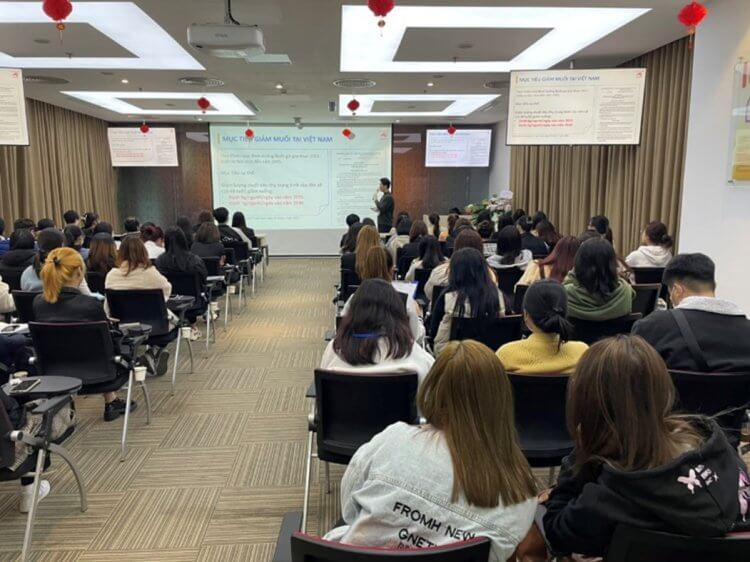
AVN staff sharing information about delicious salt reduction using umami during a facilities tour for students
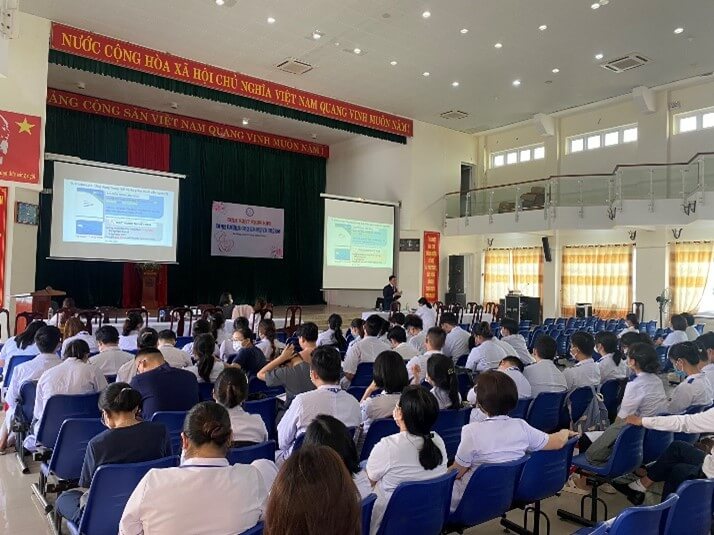
AVN staff conducting a science workshop on delicious salt reduction using umami in cooperation with Danang Hospital for Women and Children
Umami seasoning contains only one-third the amount of sodium compared to table salt. Moreover, research has shown that umami seasoning can reduce table salt usage while maintaining deliciousness. The Ajinomoto Group believes that umami can help people around the world achieve a significant reduction in the amount of salt they consume. According to a 2020 article published in the Journal of Food Science, using umami seasoning in combination with reducing salt intake can reduce sodium by up to 61% in at-home cooking and 50% in packaged foods and snacks without compromising taste.1
The Ajinomoto Group will continue spreading the word everywhere its products are sold, teaching people how to use umami seasoning creatively to reduce sodium in their diets and enjoy healthier, more fulfilling lives.
1Halim J, Bouzari A, Felder D, and Guinard JX. ‘The Salt Flip: Sensory mitigation of salt (and sodium) reduction with monosodium glutamate (MSG) in “Better-for-You” foods.’ September 2020.
Video about delicious salt reduction
Find out more:
Stories you may like

Nutrition Without Compromise: Giving people delicious, personalized choices could be key to longer, healthier lives
- Food & Wellness
- Health and Well-being
- Nutrition
- Sustainability / SDGs
- Umami

Smart solutions to reducing salt without compromising taste
- Food & Wellness
- Health and Well-being
- Nutrition
- Sustainability / SDGs
- Umami

A school lunch program in Vietnam aims to improve children’s health
- Food & Wellness
- Health and Well-being
- Nutrition
- Sustainability / SDGs
- Umami


